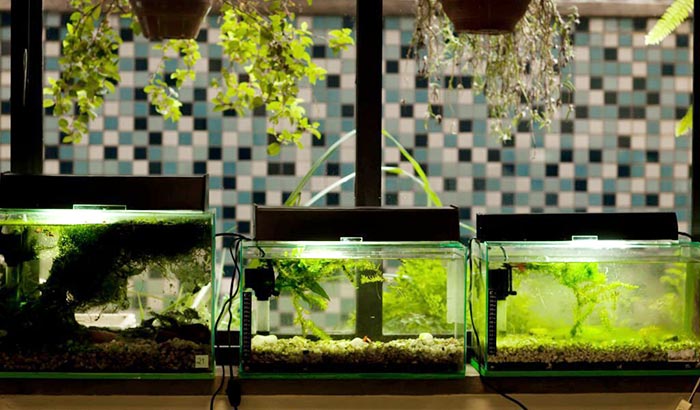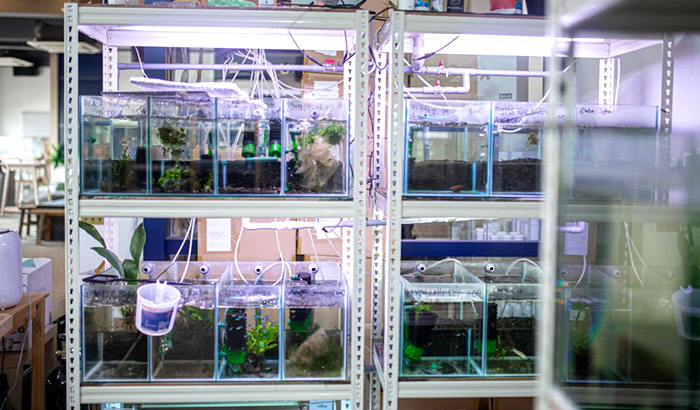Aquatic plants furnish our fish with oxygen, food, and a place to play around. Aside from the biological benefits these plants give to our fish, they also make our aquariums livelier. However, immediately placing a new plant in water may cause harm to your fish. Learn why and how to quarantine aquarium plants to lessen the risk of getting your fish and other plants sick.
Contents
Why Quarantine Aquarium Plants
No matter where they come from, too many risks are involved with placing a new plant in an aquarium. Some unwelcome guests and chemicals will tag along into the new habitat.
One group of hitchhikers you will see in new plants are algae, pests, and parasites. Although algae post no severe harm to aquamarine animals and plants, it is better to avoid algae growth in your aquarium, especially if there are no algae-eating fish in the tank. Once algae begins to grow in your tank, it can spread quickly all over, and it will be difficult to remove.
Pests and parasites can not only cling to plants already in the tank, but they can also cling to your fish. When they are introduced to your tank, you will see less and less of your plants and possibly your fish falling ill soon enough.
Harmful chemicals and bacteria are the members of the next group. They are not visible to the naked eye, yet extremely dangerous. These chemicals include pesticides and contaminants. Getting your fish sick is not the worst they can do. Most often, fish die from exposure to these chemicals.
If the plant was previously housed where there are diseases and bacteria, placing it in your tank without proper quarantine measures is a mistake you don’t want to bear fruit. Your fish will quickly pick up the diseases and bacteria that came with the plant and fall sick. You should be especially wary if the condition is contagious.
How to Quarantine Aquarium Plants
Before you begin the process, make sure that you have an available quarantine tank.
Step 1: Remove dead leaves and rock wool
The beginning of the process is removing dead leaves and rock wool from the roots. Make sure to remove all sponge-like and absorbent materials that came with the transport of the plant.
Step 2: Cut Off Overgrown Roots
If your plant has overgrown roots, cut back 1–2 cm of the roots using a pair of scissors. Then wash the plant using clean tap water.
Step 3: Sterilize the plant
I have listed three sterilization methods in this article. Take your pick, and the next steps will depend on what you choose. As a precaution, do these methods using hand gloves.
Bleach sterilization
With this process, you will need regular bleach, d. Make sure it does not contain additives (colorant, scent, soap, etc.) harmful to plants. The ratio of water to bleach is 20:1. Fully submerge the plant in the bleach solution for 90-120 minutes, depending on the plant’s sensitivity.
In another tank or a bucket, prepare your dechlorinated water by adding a water conditioner into the water. Rinse your plant and try to remove the bleach before soaking it in the dechlorinated water. The plant would stay in the dechlorinated water for 3-5 minutes.
Rinse the plant several times with clean tap water. Arguably, this sterilization process is enough precaution, and some will actually put their plant in the tank after rinsing it.
If you are not satisfied, you can quarantine your plant for five days. Do a total water change with a dechlorinator daily. Rinse it with clean tap water, then introduce it into your aquarium.
Hydrogen Peroxide sterilization
Get 3% hydrogen peroxide and mix it with water. Use 2-3 ml of hydrogen peroxide for every gallon of water. Preferably in a dark area, submerge your plant into the solution for 5 minutes.
Rinse the plant thoroughly and treat the plant with a water conditioner for 3-5 minutes. You can now plant it into the aquarium or put it under a 5-day quarantine.
Alum sterilization
Dissolve 1-3 tablespoons of aluminum sulfate into a gallon of water (room temperature). The amount of alum will depend on the sensitivity of your plant. Soak the plant for at least 3 hours if you use more alum. Soak it for three days if you used one tablespoon of alum or less.
Rinse the plant with dechlorinated water. Lastly, introduce it into your aquarium or quarantine it for five days.
Conclusion
However minor the threat is, one must always be careful in introducing new plants into an aquarium. Quarantining the aquarium plants is not an option but rather a necessity. Knowing how to quarantine aquarium plants may save your fish and other plants from diseases. It will also keep your tank and its habitats clean and healthy.


